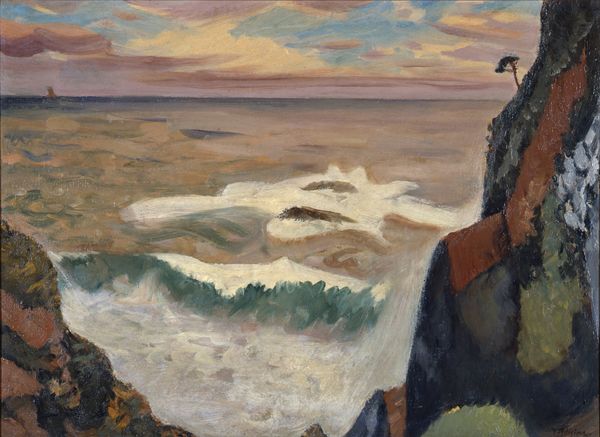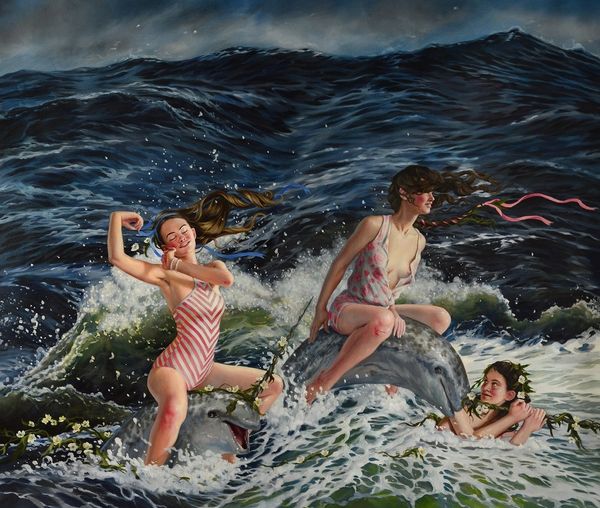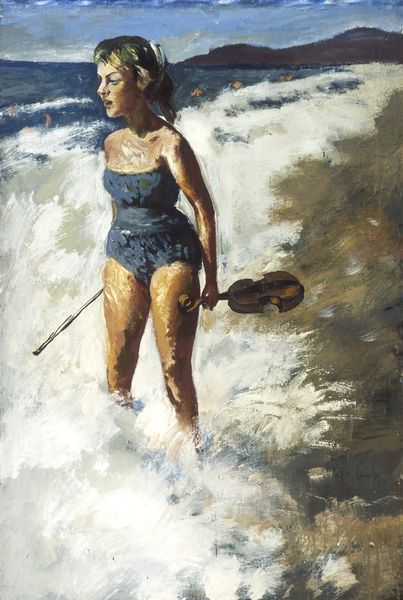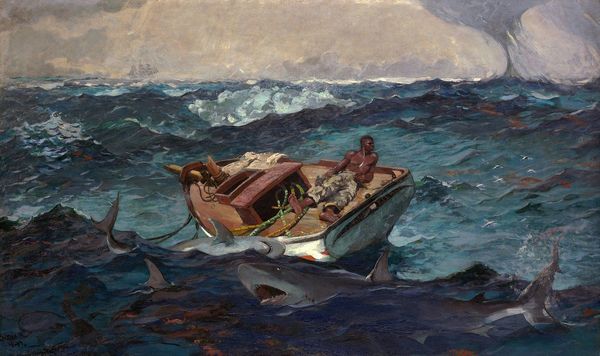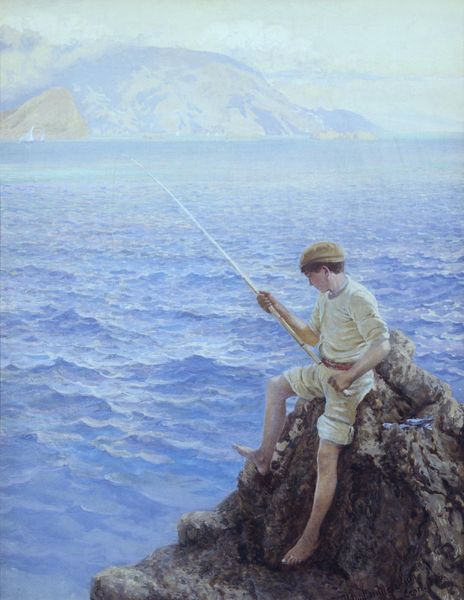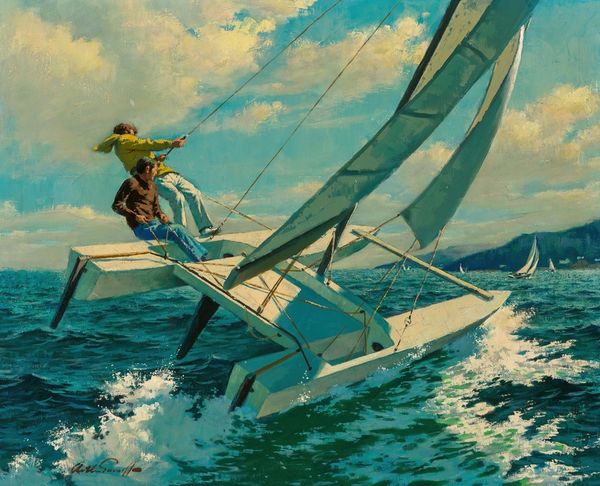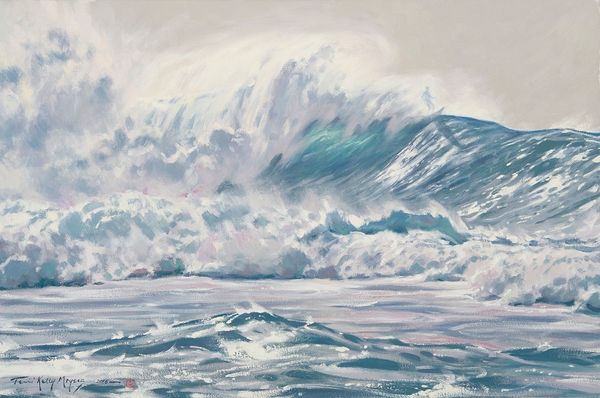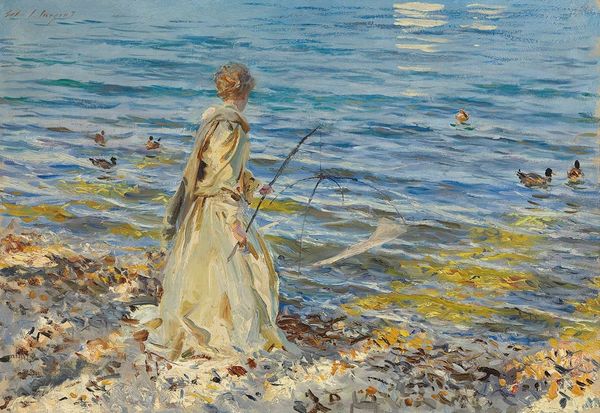
painting, oil-paint
#
portrait
#
contemporary
#
narrative-art
#
painting
#
oil-paint
#
landscape
#
fantasy-art
#
figuration
#
oil painting
#
mythology
#
surrealism
Copyright: Arsen Savadov,Fair Use
Editor: Here we have Arsen Savadov's "Gimn of Poseidon," painted in 2016, using oil paint. It has such a strange, dreamlike quality. What do you make of it? Curator: Well, I see a powerful commentary on cultural appropriation and the commodification of mythology. The figure, a Pierrot-like character playing a sea-shell horn, seems to embody a forced or performative connection with nature. Editor: Performative, how so? Curator: Consider the stilts, separating him from the natural world, elevating him unnaturally above the waves. Then look at the broken clock and the briefcase half-submerged in the water. What do they represent in contrast to the fantasy? Editor: That makes me think about time and work – like the “real world” encroaching upon a mythological narrative. It is a contrast of traditional myths with current themes... like a disconnect between humanity and its history? Curator: Precisely. Savadov seems to be asking us to examine how we package and consume narratives, especially those connected to identity and place. How does that clash affect your understanding of it? Editor: It makes me rethink the title. It's not a pure hymn; it's critical, almost cynical. Like Savadov is showing that myth, like anything else, can be exploited. Curator: Exactly. It compels us to confront uncomfortable truths about the marketability of culture. This collision can be productive when thinking about contemporary geopolitical and societal influences on our perceived values. Editor: I never thought about it that way; now it seems like there's so much more depth. I'll be looking for that context more in the future. Curator: Exploring the socio-political context of artworks can reveal hidden layers of meaning and promote insightful observations on global themes and narratives.



